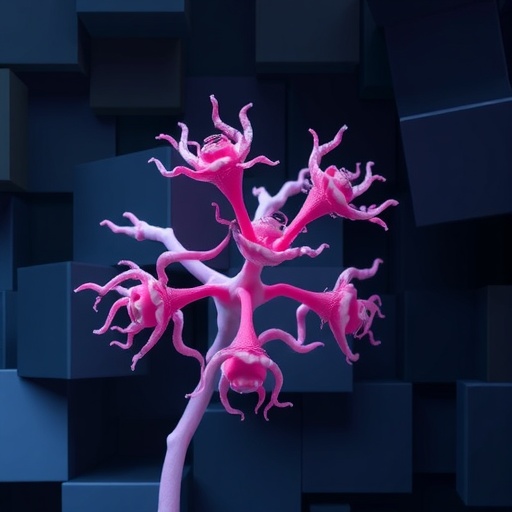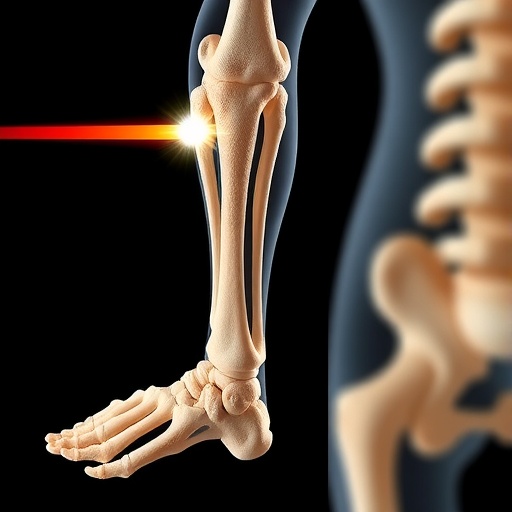In the quest for innovative antifungal agents, the research community is stepping up its endeavors, fueled by an alarming rise in fungal infections worldwide. The limitations of conventional antifungal therapies — which often suffer from issues such as toxicity and resistance — have generated a pressing need for novel compounds that offer enhanced efficacy and safety. Recent findings from a team of researchers led by Li, Wu, and Chen have spotlighted a fascinating new class of antifungal agents synthesized from phthalide derivatives. This comprehensive study offers insights into the synthesis, structure, and potential applications of these compounds, which may pave the way for effective treatments in an era plagued by resistant pathogens.
The unveiling of these novel phthalide compounds, which incorporate thiazole, 1,3,4-oxadiazole, and oxime ether functional groups, is a major leap forward in antifungal drug design. Phthalide itself is a cyclic compound characterized by a unique molecular structure that can exhibit significant biological activities. The inspiration for these new compounds stems from the increasing concern regarding the efficacy of existing antifungal medications against a spectrum of fungi that are increasingly resistant to treatment. With an estimated 1.5 million people dying each year from fungal infections, the urgency for novel approaches in antifungal therapy cannot be overstated.
With the objective of designing compounds that can effectively intersect with fungal biological pathways, the research team meticulously explored the incorporation of thiazole and 1,3,4-oxadiazole moieties into the phthalide framework. These groups are recognized for their bioactivity in various pharmacological applications, thereby enhancing the potential of the new antifungal agents. By modifying the phthalide backbone with oxime ether groups, the researchers sought to elevate the antifungal properties of their compounds, believing that such modifications could confer improved solubility and bioavailability.
The synthesis process employed by Li, Wu, and Chen is a testament to modern chemical ingenuity. The research team utilized advanced synthetic methodologies that can accurately modify molecular structures, allowing for the systematic introduction of specific functional groups into the phthalide scaffold. This careful strategic planning resulted in several novel candidates, each tailored to exhibit robust antifungal activity. Each synthesized compound underwent rigorous in vitro testing against numerous fungal strains to evaluate its efficacy.
Initial in vitro assays revealed that several of the synthesized compounds displayed remarkable antifungal properties that surpassed those of conventional antifungal agents. The researchers conducted a thorough analysis, not only measuring the compounds’ effects on fungal growth but also assessing their modes of action. Such comprehensive assessments are crucial, as they provide invaluable information regarding how these novel compounds operate at a molecular level, potentially inhibiting fungal proliferation through interference with key biological processes.
The findings suggest that these new phthalide derivatives possess the potential to become critical players in the ongoing battle against fungal infections. More than just numbers on a chart, the significance of these results lies in their real-world implications. With an ever-increasing threat from opportunistic fungi, the need for effective treatments has never been more pressing. By augmenting our antifungal arsenal, these compounds may contribute to better clinical outcomes for patients suffering from severe fungal infections.
In addition to their efficacy, the safety profiles of these novel compounds are equally promising. Different formulations of the antifungal agents were assessed for cytotoxicity against human cells, revealing a favorable selectivity index. This is a vital consideration; pharmacological agents that can effectively eliminate fungal cells without harming human tissues are paramount for safe medication. The synthesis of such selective antifungal agents could drastically improve patient treatment regimens and outcomes.
Moreover, as the researchers move from benchtop studies towards potential clinical applications, progress continues unabated in understanding the pharmacokinetics and pharmacodynamics of these novel compounds. Effective dosage regimens will be crucial for optimizing therapeutic outcomes, and ongoing research is focused on determining how these compounds behave in biological systems. Understanding absorption, distribution, metabolism, and excretion profiles will ensure that the transition from laboratory to bedside maintains the compounds’ antifungal efficiency.
Another aspect of this research centers around the molecular docking studies conducted to predict the interactions between the novel compounds and fungal target sites. Computer-aided drug design tools facilitated the simulation of potential binding affinities, offering valuable insights into which molecular modifications could enhance activity further. Such predictive modeling is essential for rational drug design, allowing researchers to prioritize the most promising candidate compounds for further development.
As this research progresses, collaborations across various scientific disciplines will be instrumental in accelerating the path toward clinical application. The intricate relationship between chemistry, microbiology, and pharmacology will inform subsequent steps in the development process, ensuring that the new antifungal agents can be advanced expediently while maintaining a focus on safety and efficacy.
With the successful synthesis and promising results generated to date, this research represents a significant step toward addressing the rising tide of fungal infections. Anticipation is building within the scientific community as Li, Wu, and Chen prepare for the next phase of their research: moving towards preclinical models and ultimately designing human clinical trials. The hope is to translate these exciting laboratory discoveries into viable therapeutic options that can save lives, alleviate suffering, and ensure better health outcomes for patients around the globe.
As we look ahead, the implications of this work are monumental. The potential for these novel phthalide-based antifungal agents stretches beyond mere clinical application; they may also serve as a foundation for future drug discovery efforts. By thoroughly examining their pharmacological profiles, researchers can take informed steps to innovate further compounds that could target other types of resistant pathogens, fostering an environment where modern medicine adapts to the evolving challenges posed by infectious diseases.
In summary, as the research by Li, Wu, and Chen highlights, the emergence of novel antifungal agents derived from phthalide is both a hopeful revelation and a necessary step in addressing one of the most pressing issues in modern healthcare. With concerted efforts in research and collaboration, there is a genuine prospect of introducing new solutions to combat antifungal resistance, ultimately changing the landscape of treatment for millions suffering from fungal infections.
Subject of Research: Novel antifungal agents derived from phthalide.
Article Title: Synthesis of novel phthalide bearing thiazole, 1,3,4-oxadiazole, and oxime ether groups as potential antifungal agents.
Article References:
Li, Y., Wu, T., Chen, G. et al. Synthesis of novel phthalide bearing thiazole, 1,3,4-oxadiazole, and oxime ether groups as potential antifungal agents.
Mol Divers (2025). https://doi.org/10.1007/s11030-025-11348-7
Image Credits: AI Generated
DOI: 10.1007/s11030-025-11348-7
Keywords: Antifungal agents, phthalide, thiazole, oxadiazole, oxime ether, drug resistance.
Tags: 134-oxadiazole compoundsantifungal drug designbiological activities of phthalidecombating fungal infectionsemerging antifungal compoundsfungal infection resistanceinnovative antifungal therapiesnovel antifungal agentsoxime ether applicationsphthalide derivatives researchsafety and efficacy in antifungal treatmentsthiazole functional groups





